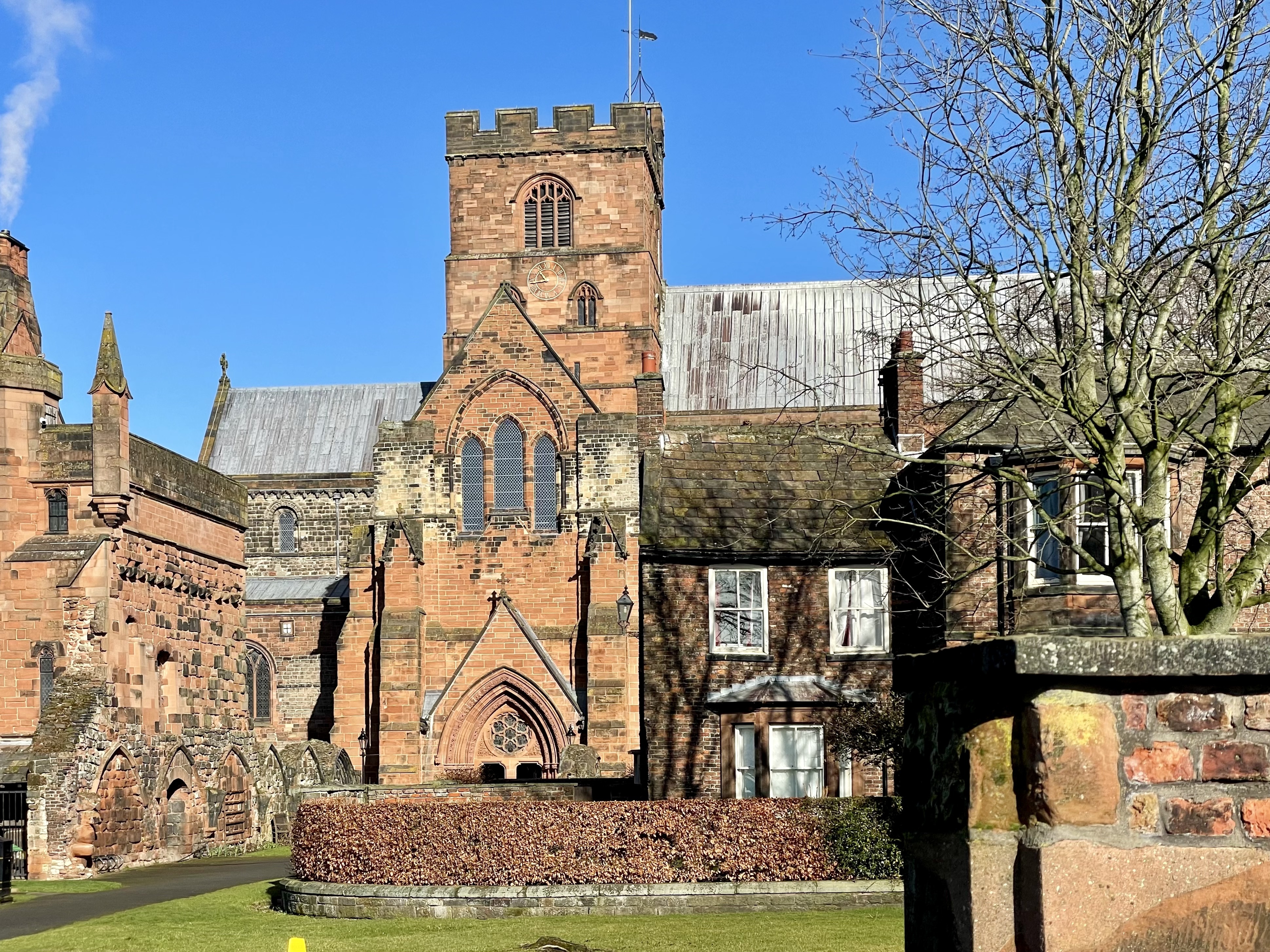
I get up at 0445 and head up to Carlisle through hovering patches of frozen mist to photograph the cathedral at sunrise. The light is blue. During the final mile into the city I watch the blue turn to purple and then to pink. The sky is apricot when I run up to the cathedral precinct and watch the first golden light creep along the chancel and aisles.
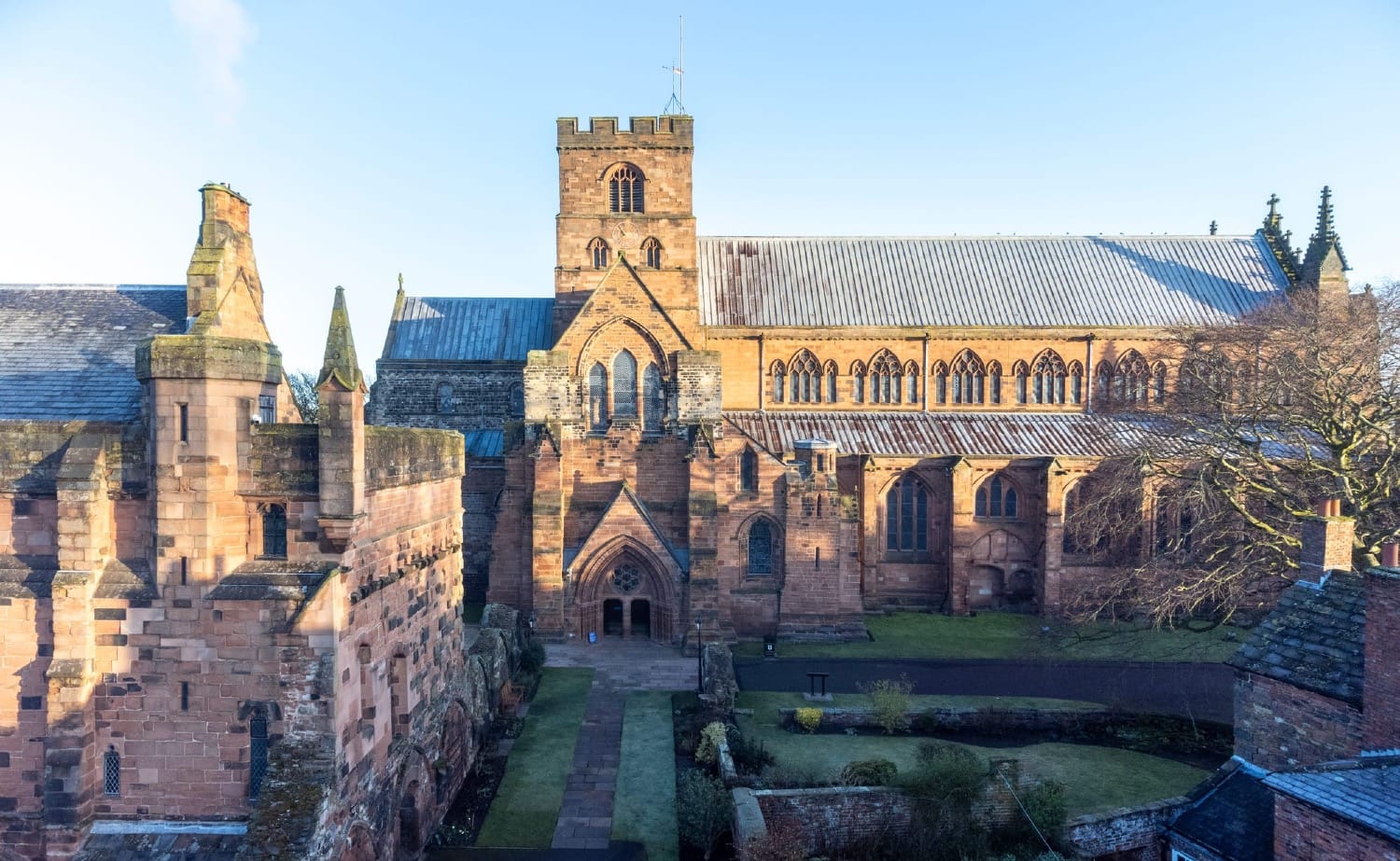
As the day passes, I work my way around The Close photographing the cathedral from various angles articulating the relationship with the precinct buildings. Outside the south aisle I meet a lady in her 80’s who tells me that her husband was a stonemason at the cathedral and this is where she first met him. Inside James the head verger is shrouding the high altar in readiness for lent - but he kindly takes it off again for the photography. He also adds a touch of incense to the choir and it’s not too long before fingers of light hover over the cathedra and lecturn.
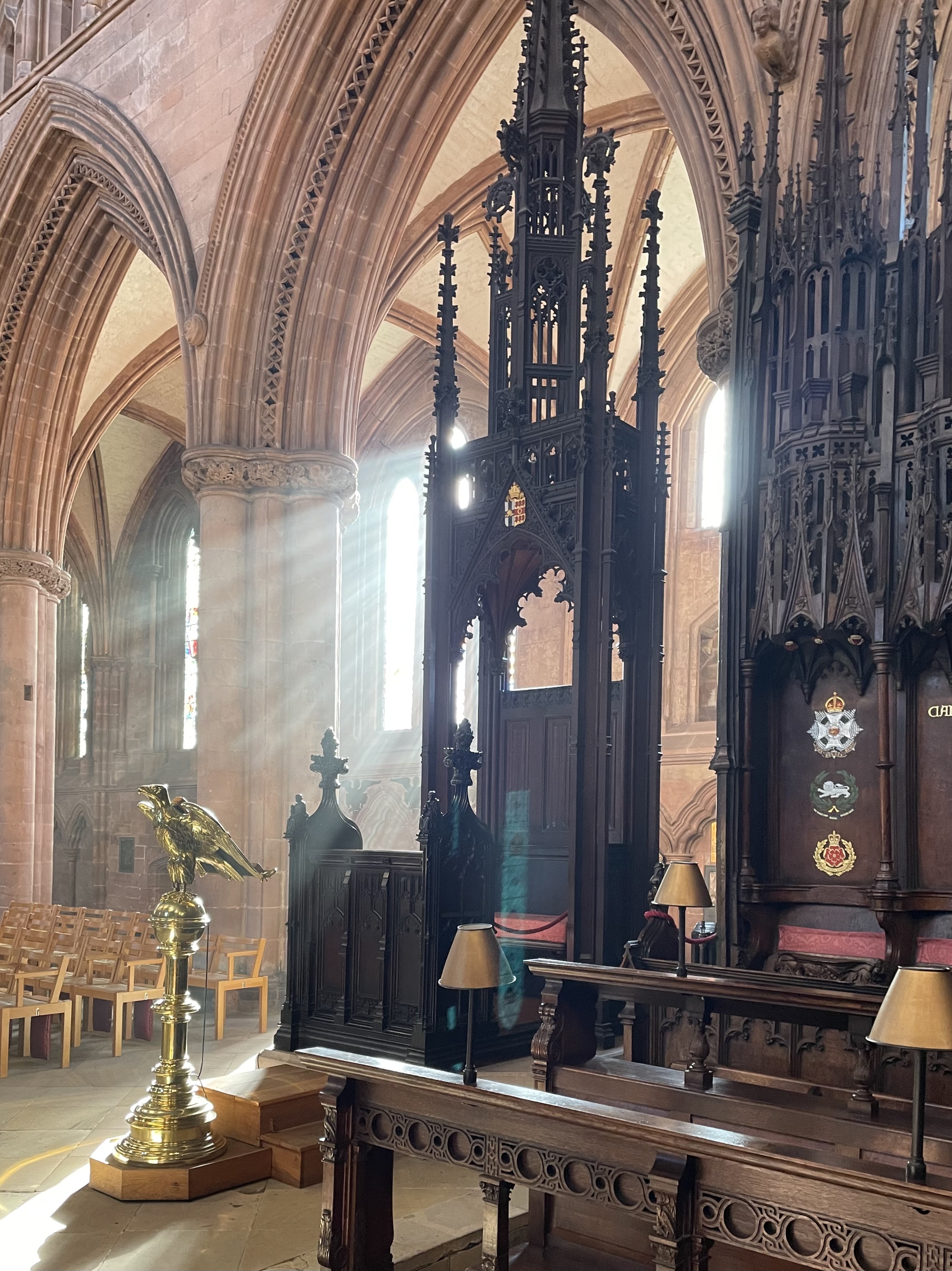
Exhausted from the early start I head into the new Fratry for sustenance. I ask the server if she can do me a poached egg on toast. She replies: “I can do you an egg mayonnaise sandwich.” I’m reminded of a few weeks ago when I called ahead to mum whilst travelling from a shoot in Poynton:
Me: “Hi mum, I’m calling in.”
Mum: “ Do you want something to eat?”
Me: “ A poached egg on toast would be nice.”
Mum: “ I’ll do you a sausage butty.”
Nothing more is said.
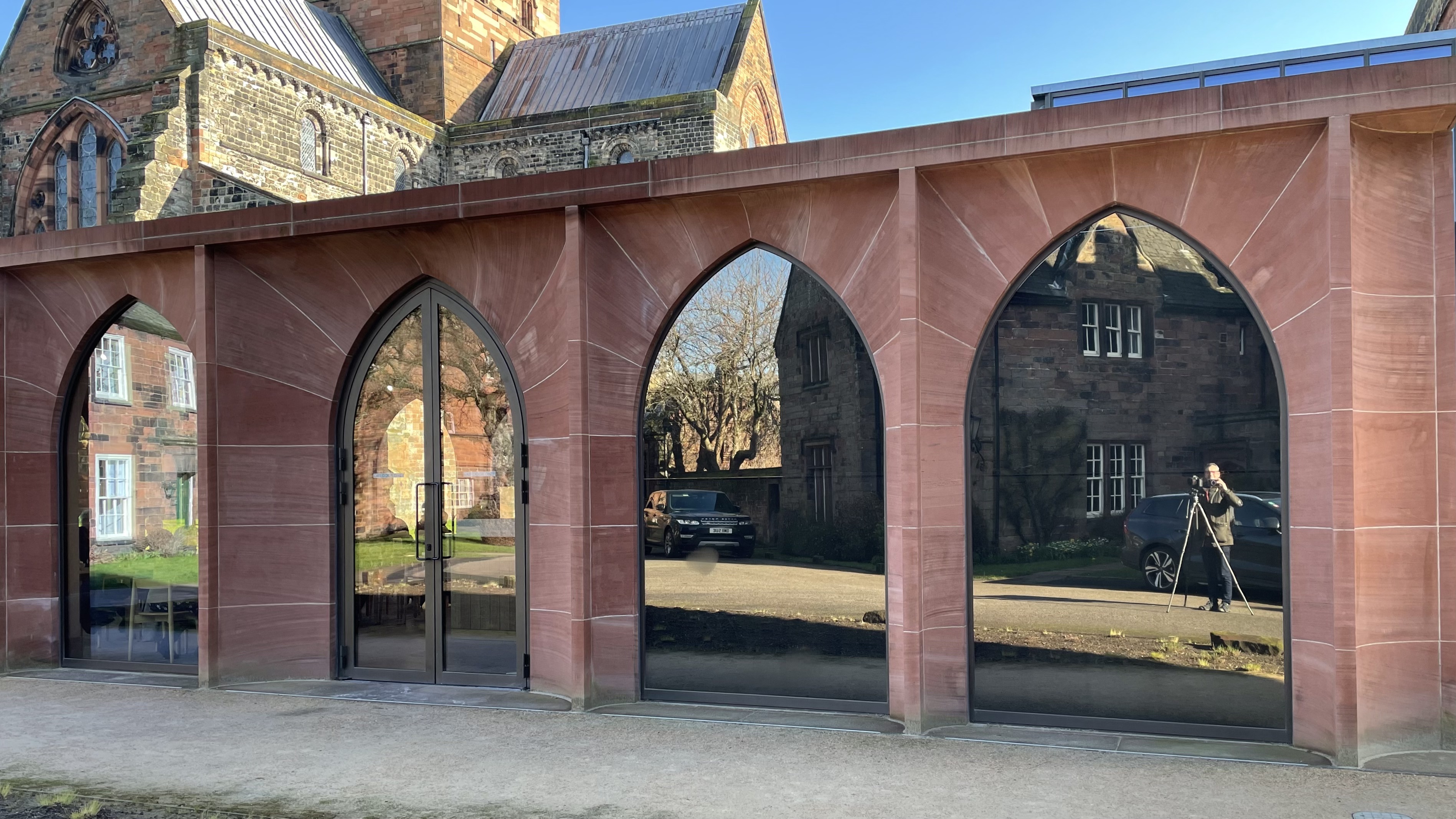
I’m booked into camp site on a farm a couple of miles south of Carlisle and I need to check in before returning to the cathedral. Margaret the farmer tells me that the sheep are in lamb and I might hear her wandering backwards and forwards in the night. I’m lodged next to the sheep shed. I can see them now through the window of my van with their heads lined up through the grate eating hay. Later, Margaret takes me inside the birthing shed and shows me the newborns. A ewe in the corner is licking her lips and stamping her cloven hooves ready to give birth.
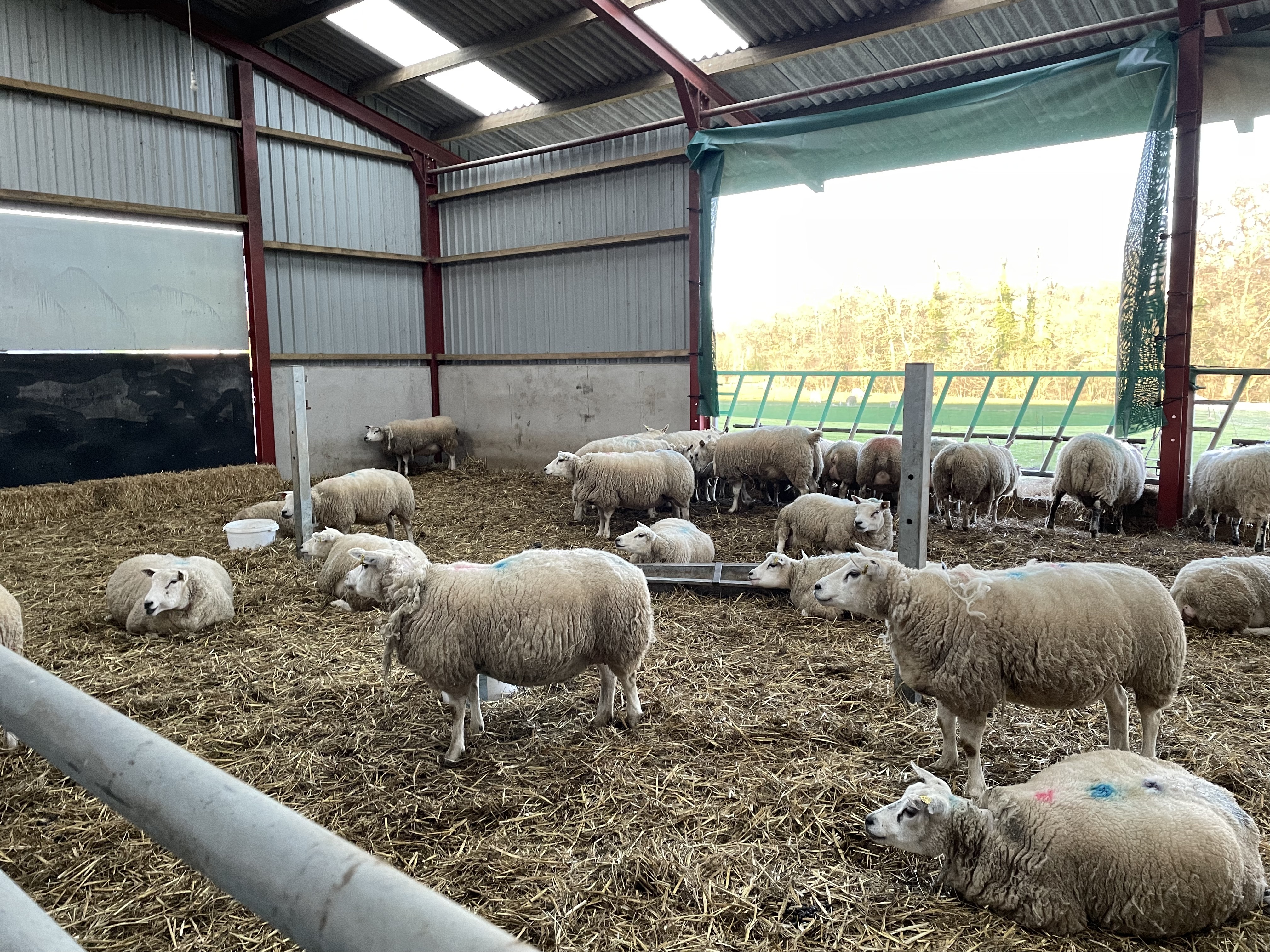
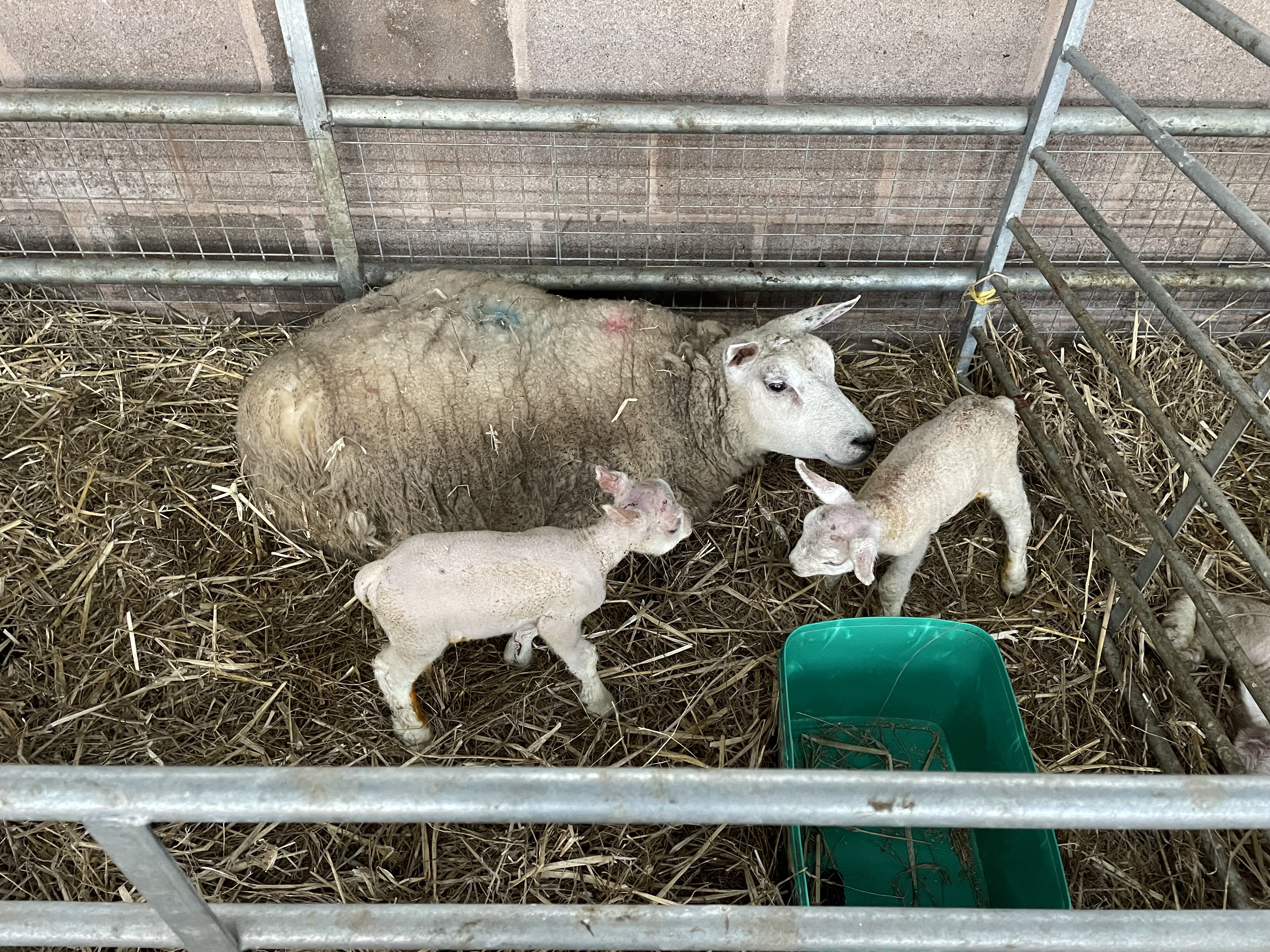
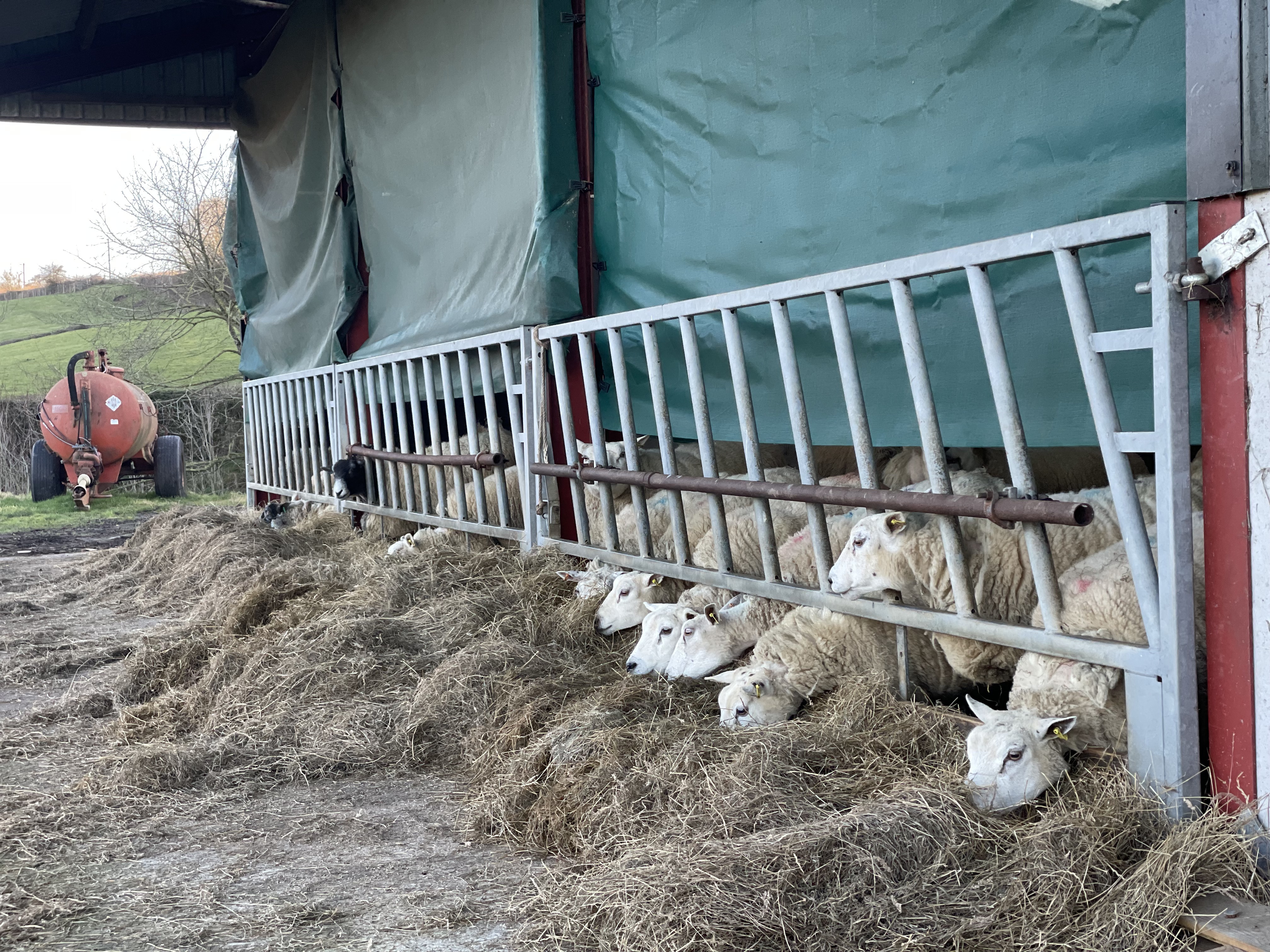
The farm has 12 cats and the van is inundated with felines of every pedigree and colour. One pads down on my faux fur and persists in winding its way under my hand. Later, they slow down my attempt to hook up the van by ratting the cable as I unravel it. I soon discover that it’s a clever ploy: whilst I’m trying to shoo the cable ratters, the rag doll has entered the van and is dining on left over porridge.
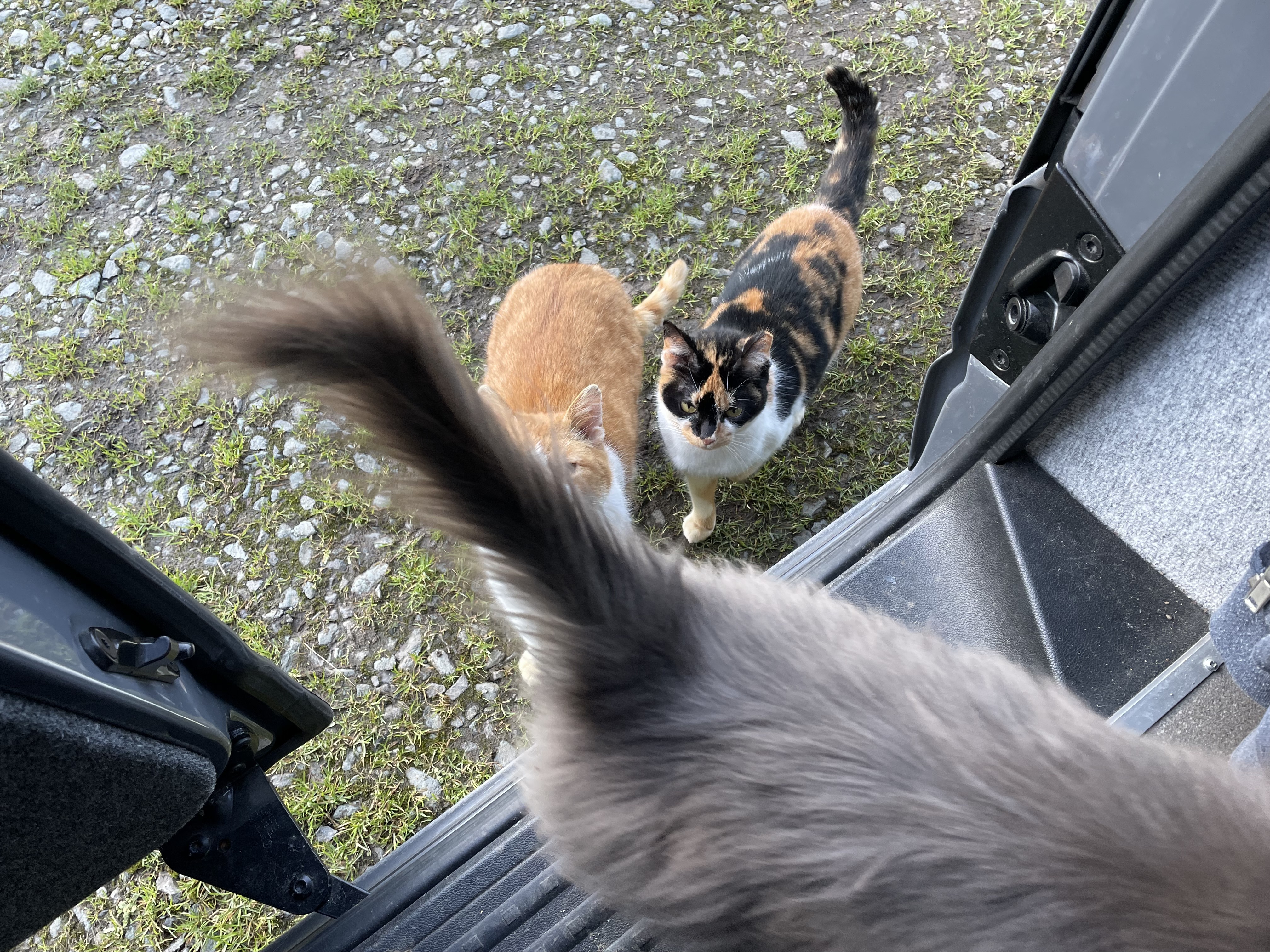
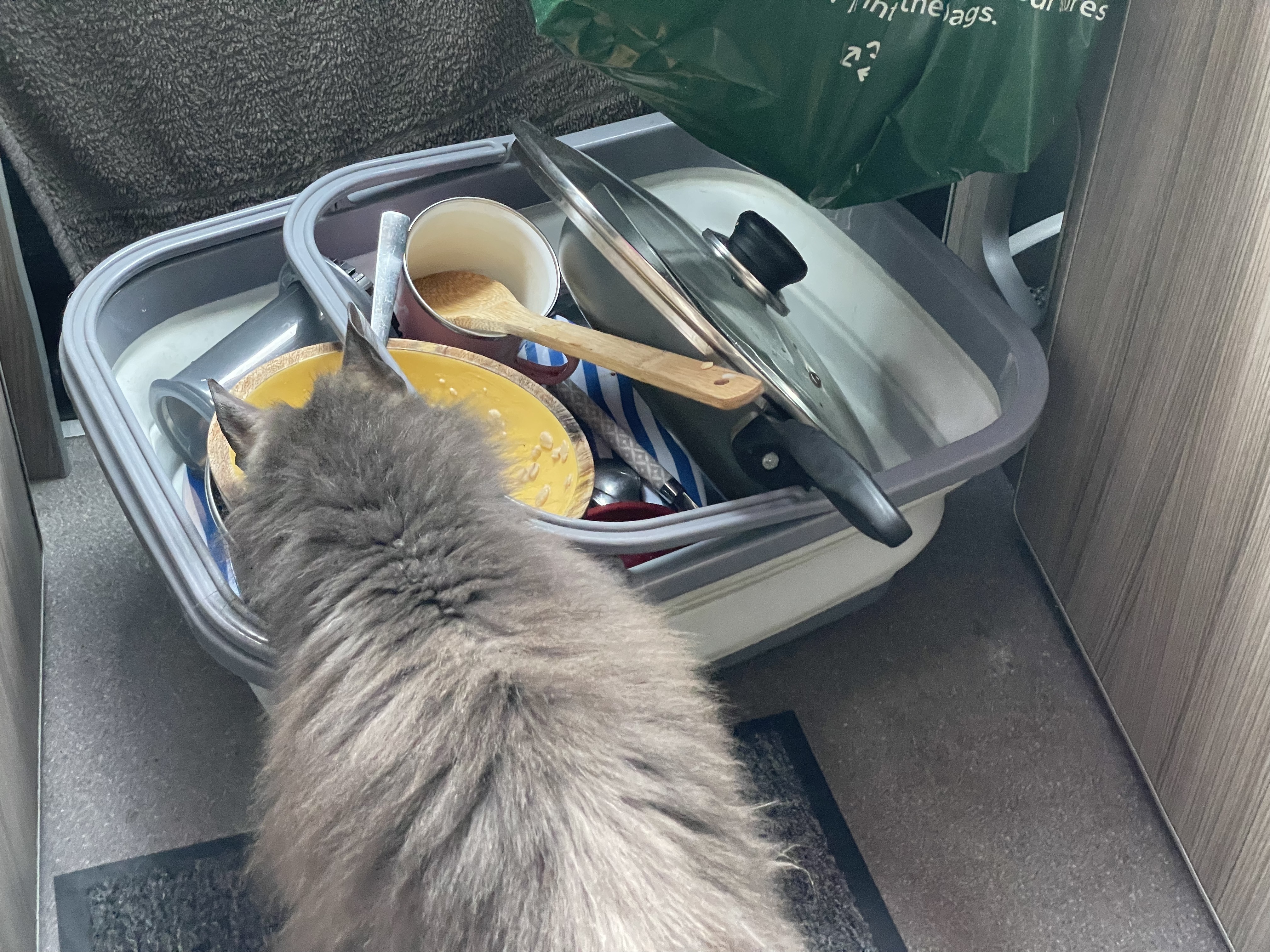
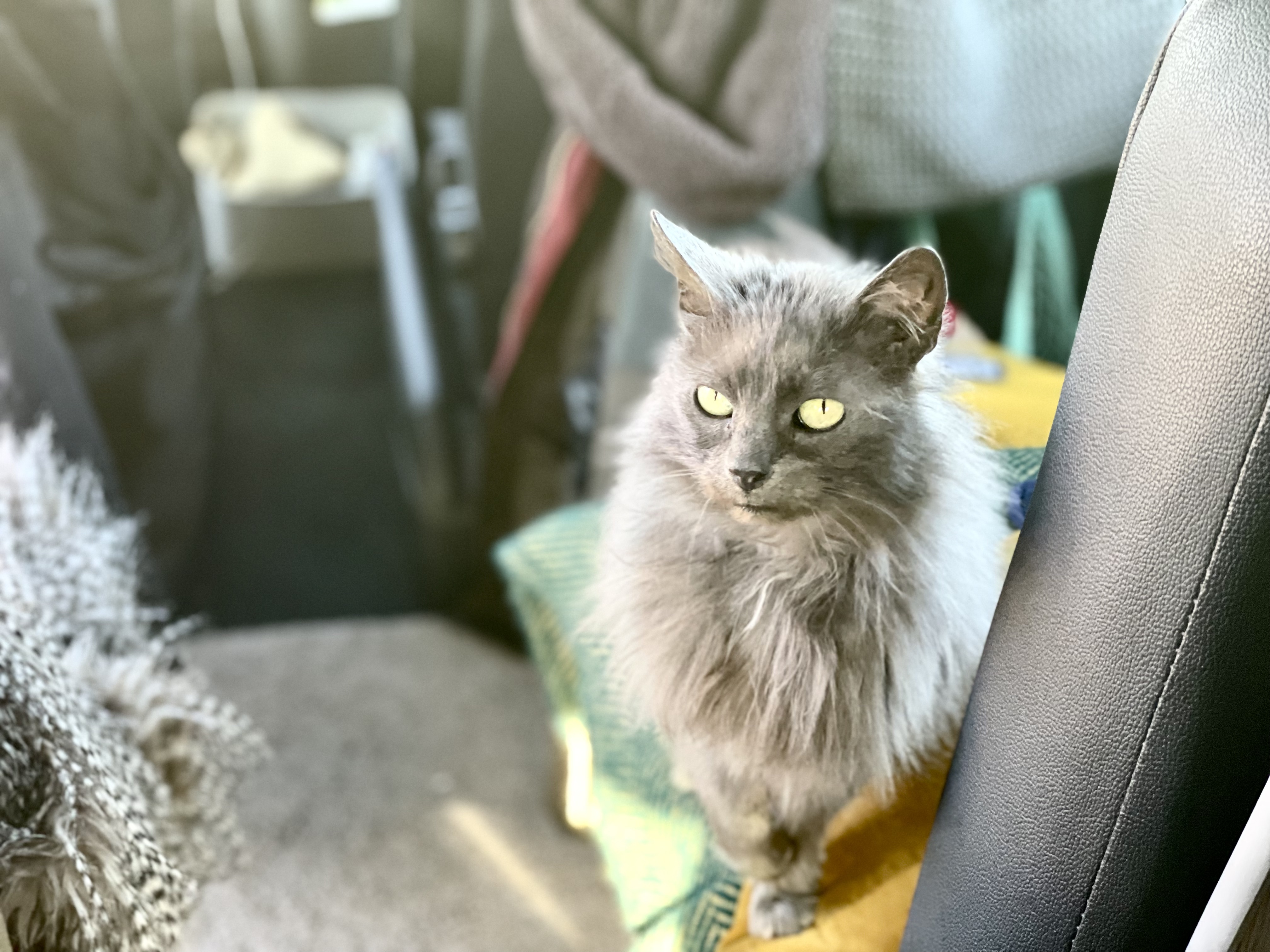
The farmer tells me to visit the church in Wreay (pronounced 'rea', as in Chris Rea), a few hundred yards from here. It was built by a woman called Sarah Losh in 1840, who funded the cost on the proviso that she could design it. I call in to the church on the way back to Carlisle. St Mary’s, Wreay is one of the most refreshing churches that I’ve come across. Every building has its time and this building’s time is now. I imagine when it was first built that architectural buffs might have seen the church as an act of naivety. For me this place is prescient: it has themes and portents ahead of its time. It’s as if Sarah Losh has mastered the art of time travel and, through this building, fashioned a message that’s relevant to us.
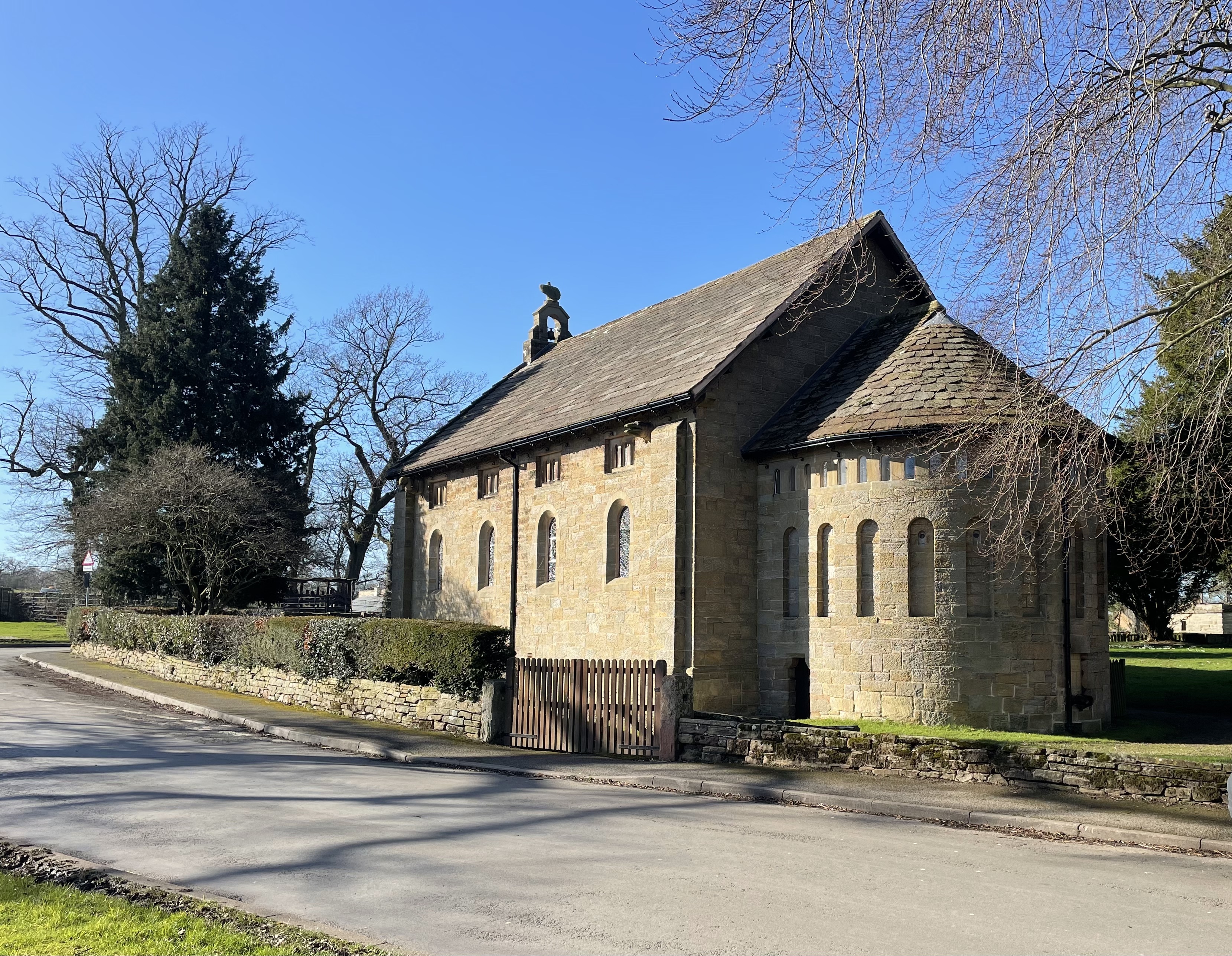
Simon Jenkins, in his book Thousand Best Churches, says of Wreay: “Unlike almost all the works in this book, Wreay appears to have been the creation of a single original mind. Sarah Losh was an individual genius, an architectural Charlotte Bronte. The Arts and Crafts Movement took half a century to catch up with her. “
I head back out to the cathedral car park and bump into a homeless chap who’s drinking a bottle of Newcastle Brown. He asks about the camera and says that photography has helped him through rehab. He tells me that he’s from Warwick. I mention that I’ve stayed in the camper van site in the middle of Warwick Racecourse. He says he once camped out there on the wooded edge for a year. He looks to be in his late 50’s with long silver hair - he has a wiry complexion with sparkling blue, smiling eyes. His hair is backlit with the sunlight. He looks earthy and of this world, textured like the surrounding medieval walls. I want to photograph him but can’t pluck up the courage to ask.
On the way up to the cathedral I’m snared by the light through the arch over Dean Tait’s Lane. It’s strong and contrasty and it zips through the portal with an eye blistering ferocity, pushing out the textures along the setts in the lane. I set the camera up and wait for somebody to walk through to give context. I get the shot and fold up my tripod. As I walk back through the gatehouse, harassed by the light, I notice the silhouette of a woman walking towards me. She looks otherworldly.
“It’s a perfect day for photography.” She says.
“It is, the textures are popping.” I say.
I wait for a response and look behind me, but she’s gone. I think of Sarah Losh. Perhaps this is the place, where she ports into the present.
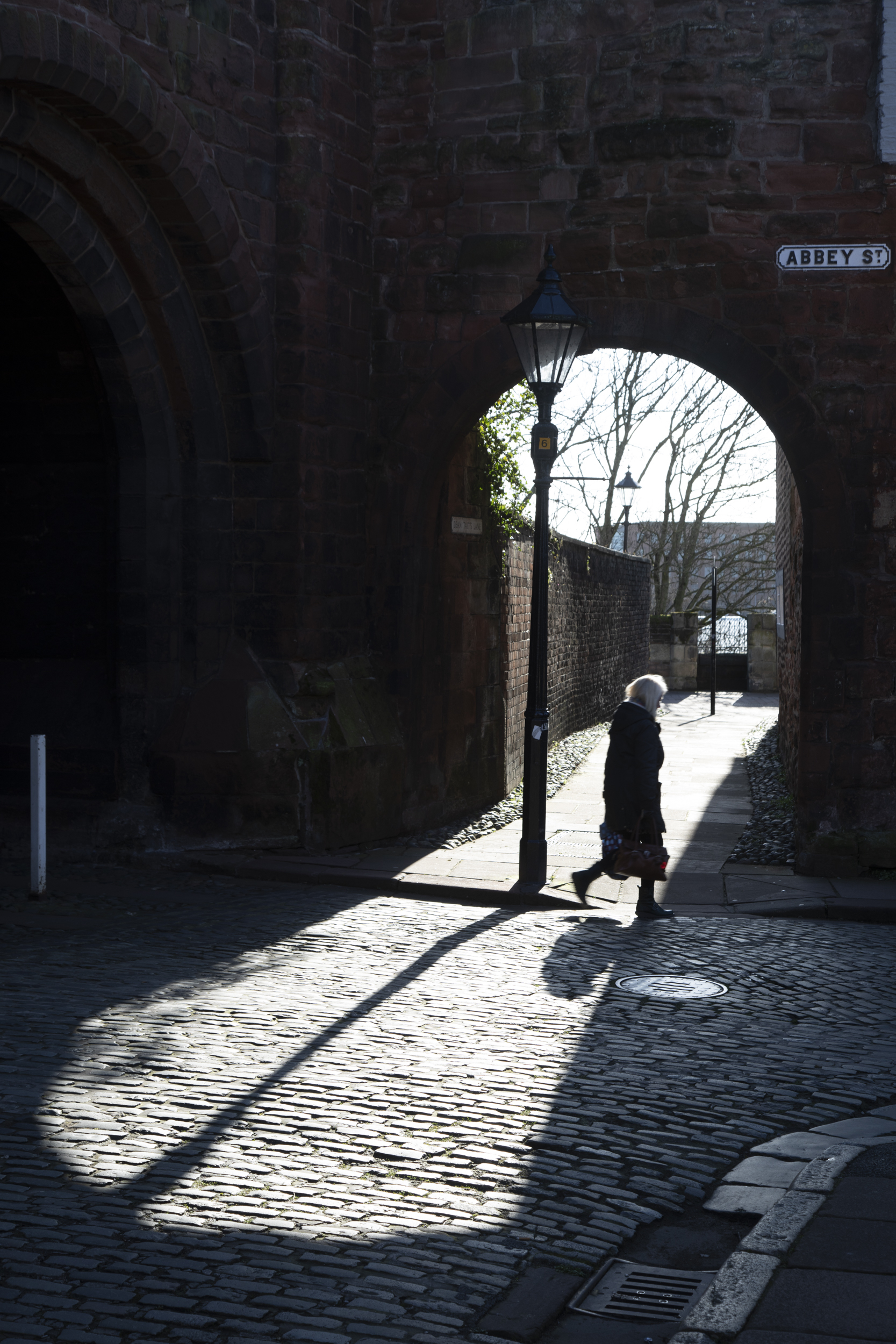
I remember the words by Tonino Griffero:
“The specific existence of the vital qualities of different spaces becomes evident and tangible mostly in the moments of passage from a space to another..”
On winter days like this the gateways throw their light out like a net and those that are caught are subject to fanciful thoughts.
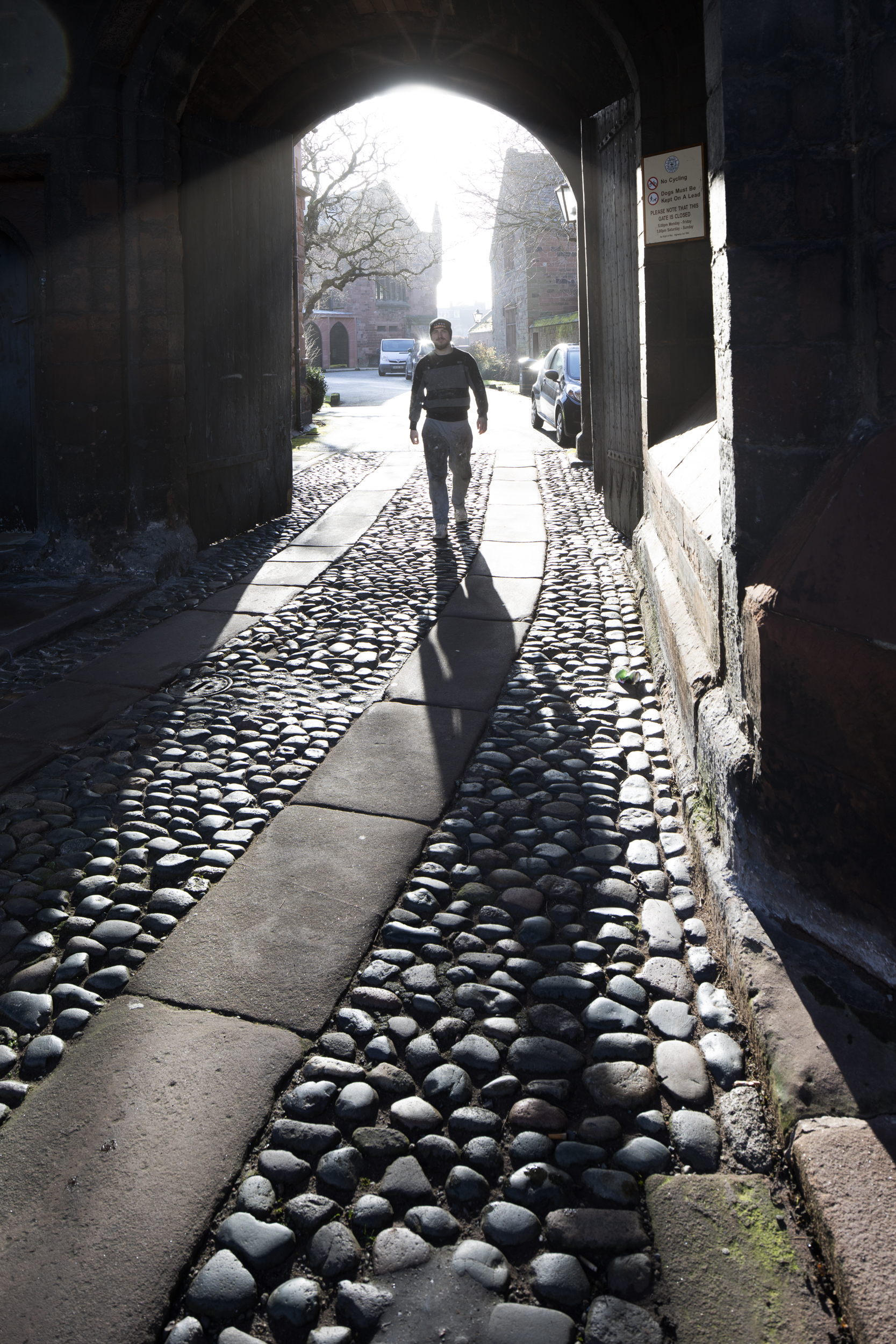
The war in Ukraine has slowed down the day and made it precious: the hustle and bustle of a photographers life; all the human interactions; every blade of grass, every cat and building, every wall and window; the textured surfaces, the sounds and smells, the light nuanced colours, the silver-haired-tent-dwellers and the church-building-time-travellers.
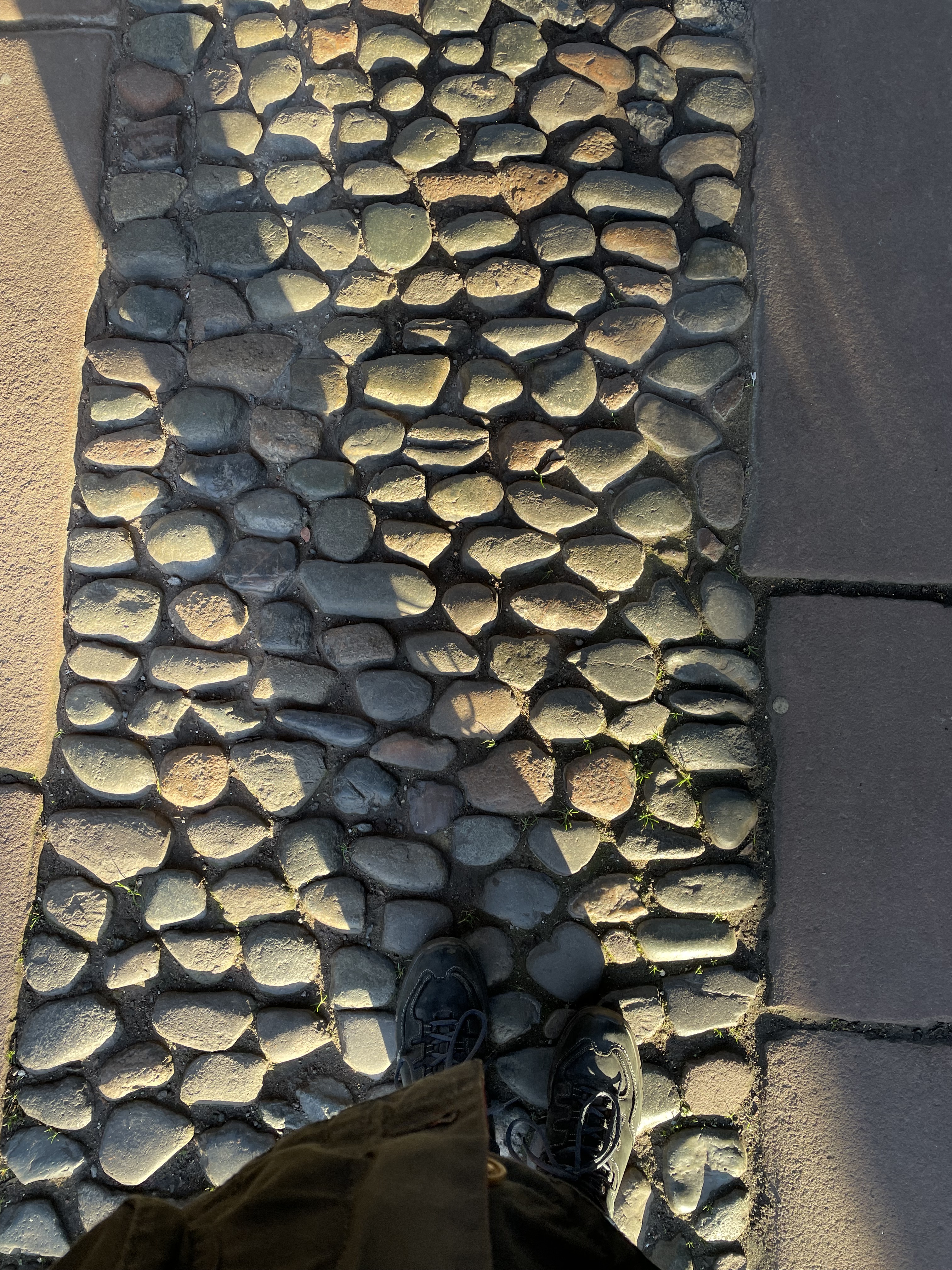

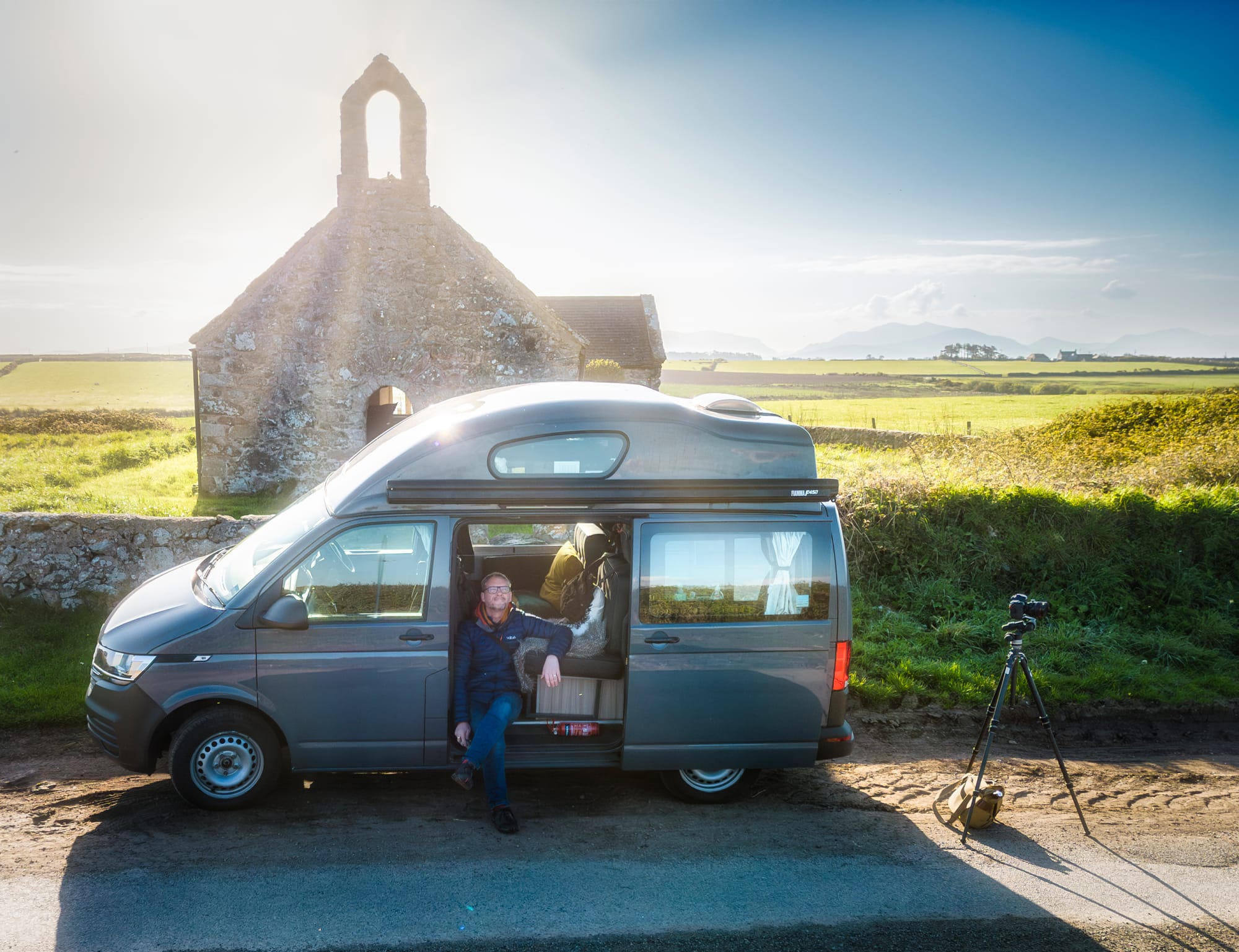
Subscribe to my Genius Loci Digest for free
'This Digest helps keep the past alive as a memory bank. Many of the answers can be found in the wisdom that sits in places, because buildings that survive from the past are the mouthpiece of history. In this Digest I tell stories about them and my encounters with them.'
SubscribeSpirit of Place * History * Material Culture * Heritage * Continuity * Photography * Travel * Architecture * Vanlife * Ways of Seeing * Wellbeing * The Historic Environment * Churches * Art * Building Conservation * Community * Place Making * Alternative Destinations * Hidden Gems * Road Trips * Place Writing *
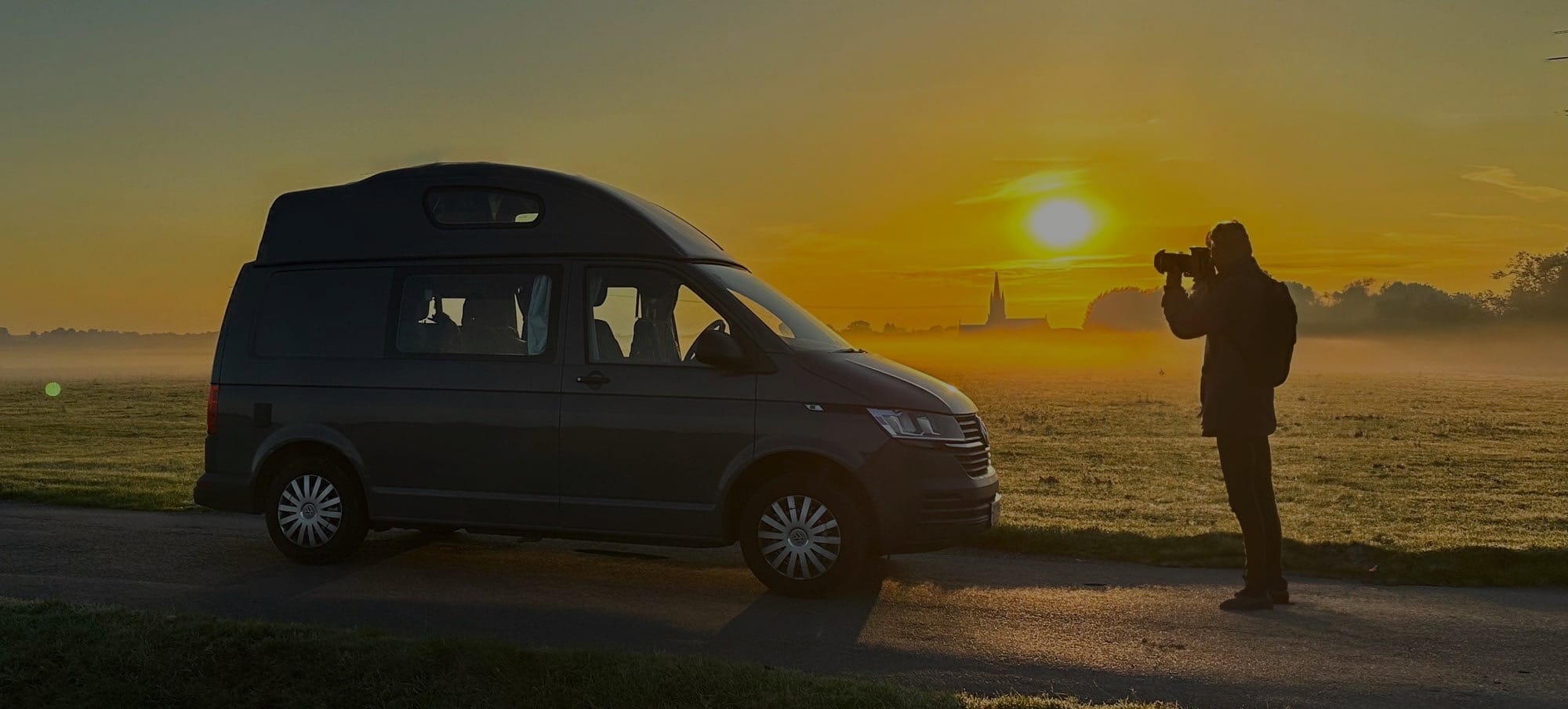

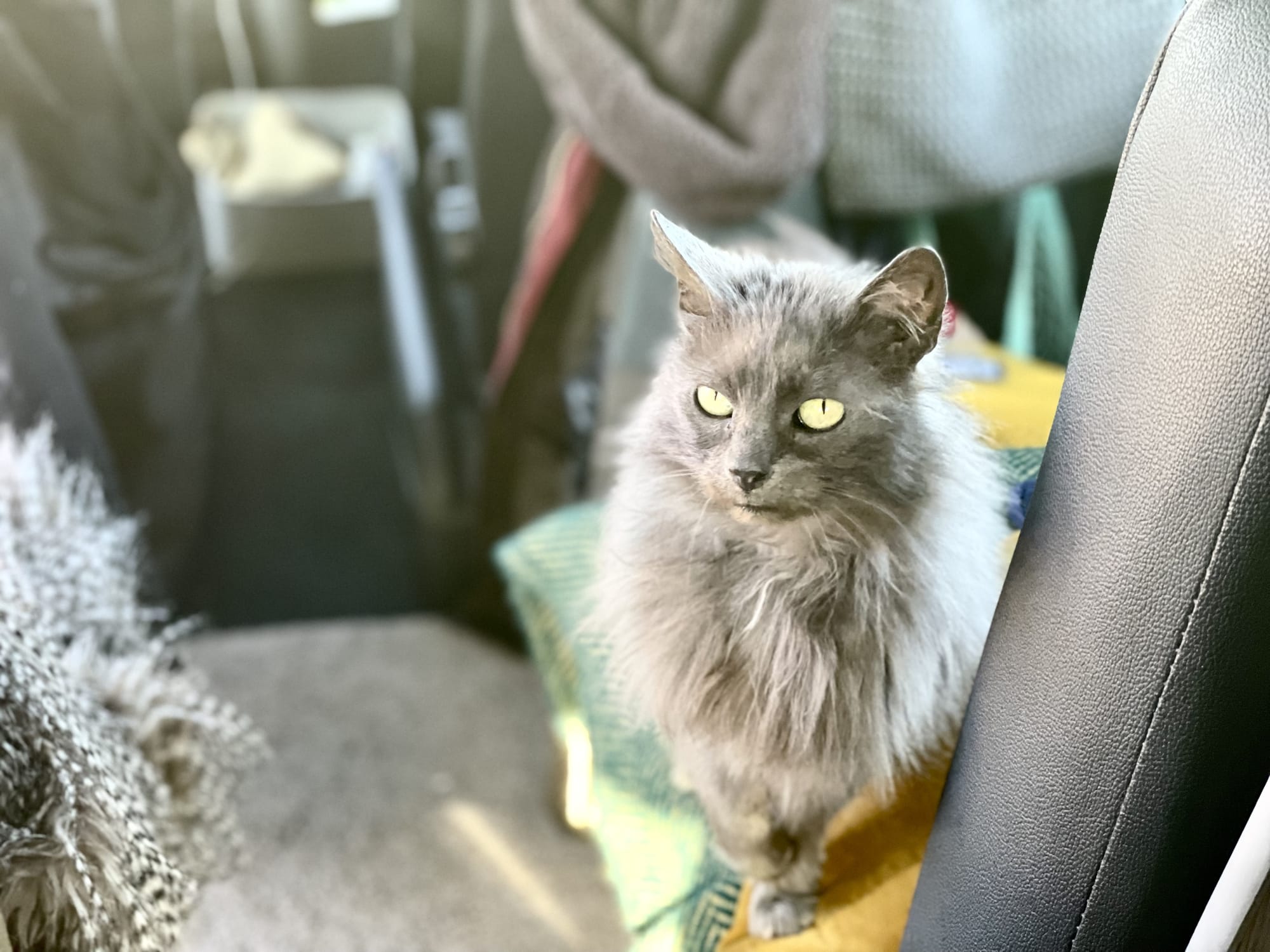




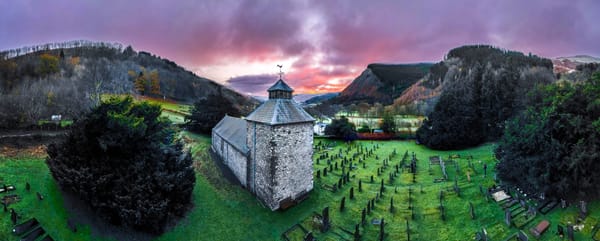
Member discussion